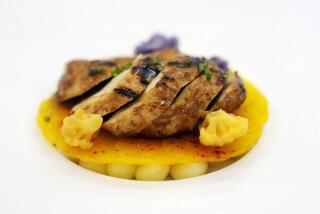Experimental Breast-Implant Technique Uses Body’s Own Cells
- Share via
ANN ARBOR, Mich. — While lawyers battle over the dangers of silicone breast implants, scientists are exploring a procedure that uses a woman’s own cells to create tissue inside the breasts--in effect, a “grow your own” alternative.
The experimentation is years behind other silicone substitutes that use vegetable fats and oils, but supporters note that this technique doesn’t permanently leave foreign substances in the body.
“We’ve been trying to outsmart the body’s immune system. These fellows have come up with a concept that works with it,” said James Martin, research director at Carolinas Medical Center. The experiments began last fall at the Charlotte, N.C., hospital and at the University of Michigan in Ann Arbor.
Silicone has been blamed by hundreds of thousands of women for serious immune system diseases. In 1992, the Food and Drug Administration banned purely cosmetic silicone implants. The procedure is still available for reconstruction after cancer and other medical reasons.
If early work on laboratory animals succeeds, the researchers, within three to five years, will remove a tissue sample from somewhere in a woman’s body, use it to grow additional cells in the lab, then implant the cells in the woman’s breast. There, they should multiply and mature into real breast tissue.
This year, the scientists are trying the treatment in laboratory rats. Next year, they plan to try it on pigs.
Here’s how it would work:
A tissue sample with cells similar to breasts--high in fat--is removed from the thigh or abdomen. The tissue is treated with enzymes to break it down into basic cells. These cells are collected in a laboratory dish with a solution of nutrients, where they multiply.
Once there’s enough of them, the cell solution coats a sponge-like scaffold of biodegradable plastic in the shape of a breast implant.
Inside the body, the cells continue to multiply, but now they start acquiring characteristics of most breast tissue--except for mammary glands that produce milk.
Capillaries start to grow into the scaffolding. Within weeks, the scaffold dissolves, leaving only breast cells behind.
Scientists believe the cells will fill the space left for them by the scaffolding and then somehow know to stop growing.






